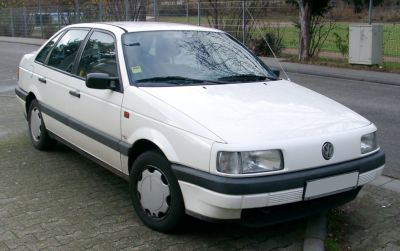 1956 Mercedes-Benz W105 Sedan Dimensions, Size & Specs
1956 Mercedes-Benz W105 Sedan Dimensions, Size & SpecsMeasurements of the 1956 Mercedes-Benz W105 Sedan, engineered for optimal performance and comfort
| Dimensions | |
|---|---|
| Length: | 4650-4680 mm183.1-184.3 in15.3-15.4 ft |
| Width: | 1740 mm68.5 in5.7 ft |
| Height: | 1560 mm61.4 in5.1 ft |
| Weight Specifications | |
| Curb Weight: | 1260-1275 kg2778-2811 lbs |
| Maximal permitted Weight: | 1725 kg3803 lbs |
The Mercedes-Benz Ponton W105 Sedan, produced between 1956 and 1959, represents a classic era of automotive design and engineering. This mid-20th century sedan features a length ranging from 4650 mm to 4680 mm (183 to 184.3 inches), a width of 1740 mm (68.5 inches), and a height of 1560 mm (61.4 inches). These dimensions reflect a balanced and elegant profile typical of Mercedes-Benz luxury vehicles from the 1950s.
With a curb weight varying between 1260 and 1275 kg (2778 to 2810 lbs) and a maximum allowable weight of 1725 kg (3804 lbs), the W105 Ponton Sedan delivers substantial build quality and road presence, while maintaining good handling and ride comfort characteristics relative to its era. The vehicle’s body style is a classic four-door sedan, highlighting the practical yet stylish design ethos Mercedes-Benz was known for in the post-war period.
The Ponton series, including the W105, is noted for introducing a more modern, pontoon-shaped body style, with smooth curves replacing the pre-war angular lines. This particular generation, the W105, features distinctive styling cues and size advantages over its predecessors and helped solidify Mercedes-Benz’s reputation for combining luxury, durability, and engineering innovation. Whether viewed from the standpoint of historical significance or dimensional comparison, the Mercedes-Benz Ponton W105 Sedan stands out as an iconic example of automotive craftsmanship from the 1950s.
Discover the standout features that make the 1956 Mercedes-Benz W105 Sedan a leader in its class
Have a question? Please check our knowledgebase first.
The Mercedes-Benz Ponton W105 Sedan from 1956 to 1959 measures approximately between 4650 mm and 4680 mm (183 to 184.3 inches) in length. Its width is around 1740 mm (68.5 inches), and its height stands at about 1560 mm (61.4 inches). These dimensions reflect the classic mid-20th-century sedan proportions, offering a balanced mix of elegance and road presence typical of luxury vehicles from Mercedes-Benz during that era.
The curb weight of the Mercedes-Benz Ponton W105 Sedan ranges between 1260 kg and 1275 kg (approximately 2778 to 2810 pounds). The maximum allowable weight, which includes passengers and cargo, is about 1725 kg (3,802 pounds). These weight figures reflect the vehicle's solid construction, emphasizing durability and safety, which were hallmarks of Mercedes-Benz engineering during the 1950s.
Yes, the Mercedes-Benz Ponton W105 Sedan fits comfortably into a standard garage. Most modern standard garages have a minimum width of about 2.4 meters (7.9 feet) and a height clearance of around 2.1 meters (6.9 feet). Given the W105's width of 1.74 meters (5.7 feet) and height of 1.56 meters (5.1 feet), it leaves sufficient space for easy parking and opening doors, making it suitable for typical residential garage spaces.
Compared to its predecessors, the Mercedes-Benz Ponton W105 Sedan marked a notable increase in size, contributing to enhanced passenger comfort and road presence. Earlier models before the Ponton series were generally smaller and less roomy. The W105's length of up to 4680 mm (184.3 inches) and its width of 1740 mm (68.5 inches) were larger than many earlier sedans from Mercedes-Benz, reflecting the company's move toward more spacious executive cars in the mid-1950s.
When compared to similar luxury sedans of the mid-1950s, such as the BMW 502 or Jaguar Mark VII, the Mercedes-Benz Ponton W105 Sedan held competitive dimensions. Its length of around 4650-4680 mm (183-184.3 inches) and width of 1740 mm (68.5 inches) offered a slightly more conservative size than some of its British and German rivals but still provided ample interior space. Its balanced size contributed to a refined ride quality and prestigious road presence customary to Mercedes-Benz luxury sedans of the period.
The Mercedes-Benz Ponton W105 Sedan offers a spacious and comfortable interior for its time, with a well-appointed cabin designed for executive class comfort. Although precise interior dimensions can vary slightly, the vehicle's generous exterior measurements translate to sufficient legroom and headroom for front and rear passengers. The supportive seats and high-quality materials used in the interior enhance comfort on long drives, embodying Mercedes-Benz’s renowned dedication to passenger luxury and ergonomic design in the 1950s.
With a height of 1560 mm (61.4 inches), the Mercedes-Benz Ponton W105 Sedan strikes a balance between providing a comfortable upright seating position and maintaining aerodynamic functionality for its era. This height contributes to roomy headspace for passengers but also keeps the center of gravity low enough to promote stable handling. The sedan's height allowed for ease of access and exit, important aspects for a luxury sedan designed for executive transport in the 1950s.
While specific figures for the turning radius of the Mercedes-Benz Ponton W105 may not be detailed in available records, its size—being about 4650 to 4680 mm (183 to 184.3 inches) in length—suggests it enabled reasonable maneuverability for a luxury sedan of its time. Typically, cars of similar dimensions had turning circles around 11 to 12 meters (36 to 39 feet), adequate for urban driving and parking. The sedan’s moderate width of 1740 mm (68.5 inches) further enhances its ease of navigation through narrow city streets and parking situations.
The Mercedes-Benz Ponton W105's curb weight of 1260-1275 kg (2,778-2,810 lbs) is fairly typical among Ponton series sedans, though it may be slightly heavier or lighter depending on specific equipment and options. Compared to the smaller W120/W121 'Ponton' models, the W105 often weighs more due to its extended length, wider body, and added luxury features. This additional weight contributes to enhanced ride comfort and structural rigidity but also slightly affects fuel consumption and performance parameters.
The Mercedes-Benz Ponton W105 Sedan has a width of 1740 mm (68.5 inches), which, while narrower than many modern sedans, gives it a classic, less bulky profile. This narrower width compared to contemporary vehicles allows for easier parking and maneuvering in tight spaces, especially beneficial in narrow European urban environments where the car was originally sold. The width also supports a stylish and elegant road presence typical of mid-century Mercedes-Benz cars while maintaining practical usability today.
Discover similar sized cars.

| Production: | 2006-2012 |
|---|---|
| Model Year: | 2006 |
| Length: | 4610 mm181.5 in |
| Width: | 1695 mm66.7 in |
| Height: | 1500-1510 mm59.1-59.4 in |

| Production: | 1988-1993 |
|---|---|
| Model Year: | 1988 |
| Length: | 4573-4595 mm180.0-180.9 in |
| Width: | 1705 mm67.1 in |
| Height: | 1428-1480 mm56.2-58.3 in |
